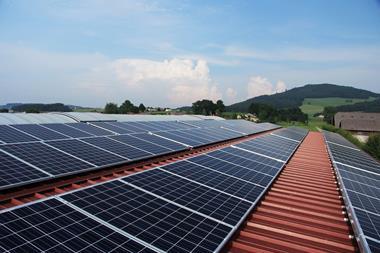Denmark’s biggest pension fund has added an environmental factor to its foreign equities portfolio to ‘future proof’ up to DKK50bn (€6.7bn) of its investments.
ATP believes the major change will bolster returns over the long term by focusing on companies better set up to deal with future challenges.
Over the past year, the DKK785bn pension fund has been backtesting the addition of environmental data as a fourth “signal” to the algorithm used to pick stocks for its systematically-invested portfolio of foreign equities in its return-seeking investment fund.
In January, the innovation was implemented for ATP’s quantitatively managed foreign equities portfolio, which holds between DKK40bn and DKK50bn.
Kasper Ahrndt Lorenzen, ATP’s chief investment officer, told IPE: “What we have done has improved our carbon footprint significantly, but the main thing for us is that through this, I really believe we’ll have a better selection method.
“We’ll price ourselves out of companies that don’t think the green transition is going to happen.”
“It is all about creating a robust portfolio, and one that is orientated toward the future”
Kasper Ahrndt Lorenzen, CIO, ATP
Following several years of work on the foreign equities portfolio – including the integration of the hedge fund ATP Alpha in 2013 – ATP’s entire portfolio is run using “smart beta” strategies, using three alternative risk premia “signals” in an algorithm to decide on asset class exposure. The three signals are ‘low risk’, ‘momentum’ and ‘value’.
The addition of an environmental factor is the fourth signal to be added to the algorithm.
The adjustment involved switching around 5% of the fund’s equities – more than DKK2bn of re-investment – changing its holdings in 20 out of the 400 companies within the portfolio.
So far, the new factor has focused only on sectors in which carbon emissions are a key problem – namely oil and gas, utilities, materials and transportation.
As a result of the change, the carbon footprint of ATP’s portfolio has shrunk by 26%, Ahrndt Lorenzen said, but he emphasised that this was a beneficial side effect of what his team was trying to achieve.
The new signal would put an emphasis on companies exposed to the energy transition and therefore less in denial about the future, Ahrndt Lorenzen said.
“It is all about creating a robust portfolio, and one that is orientated toward the future,” he said.
ATP’s backtesting of the environmental factor included more than 7bn data points, the company said. The research showed that, historically, adding this fourth signal – and therefore reducing the relative impact of the other three signals – did not affect overall returns negatively or positively.























No comments yet